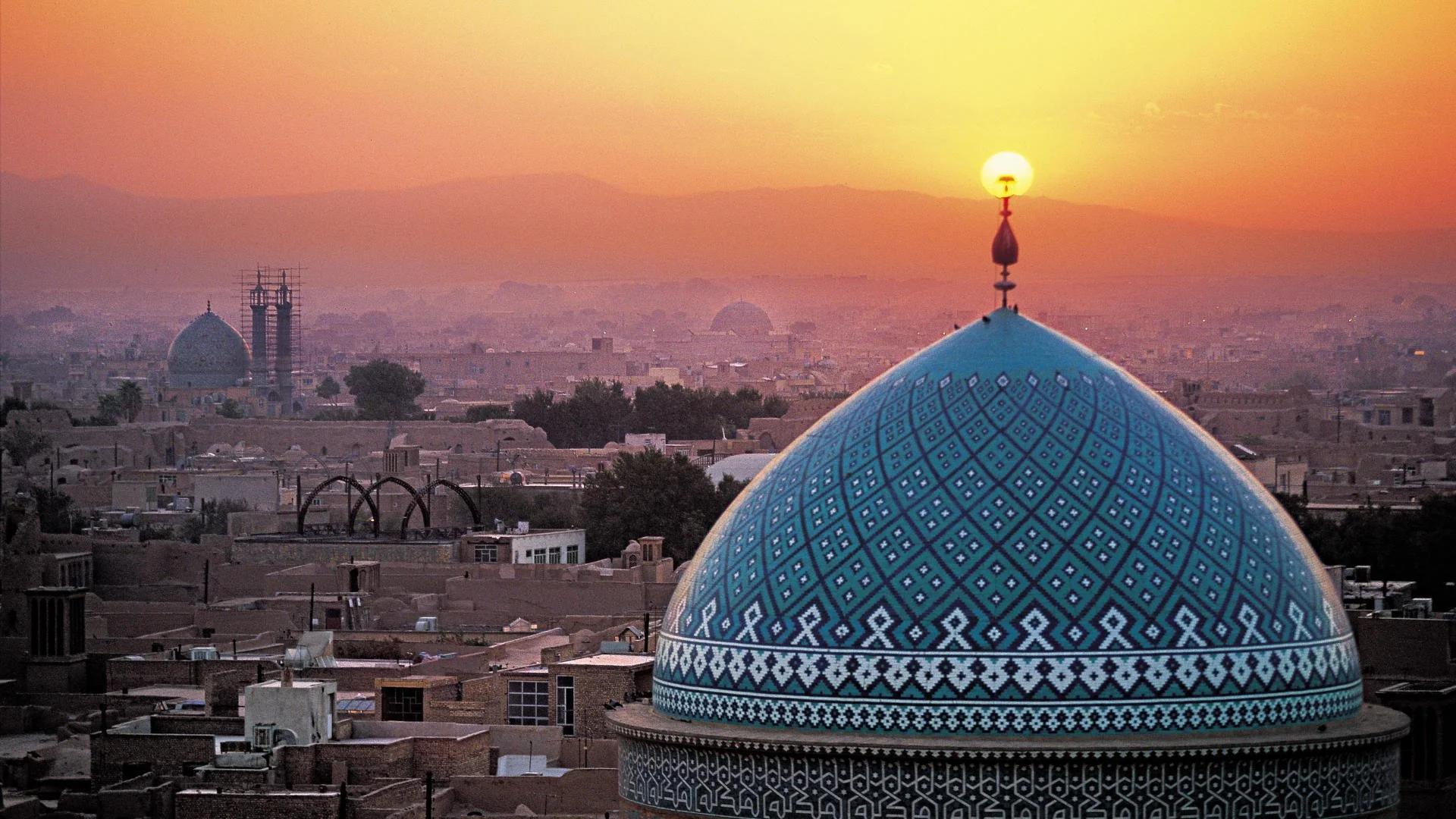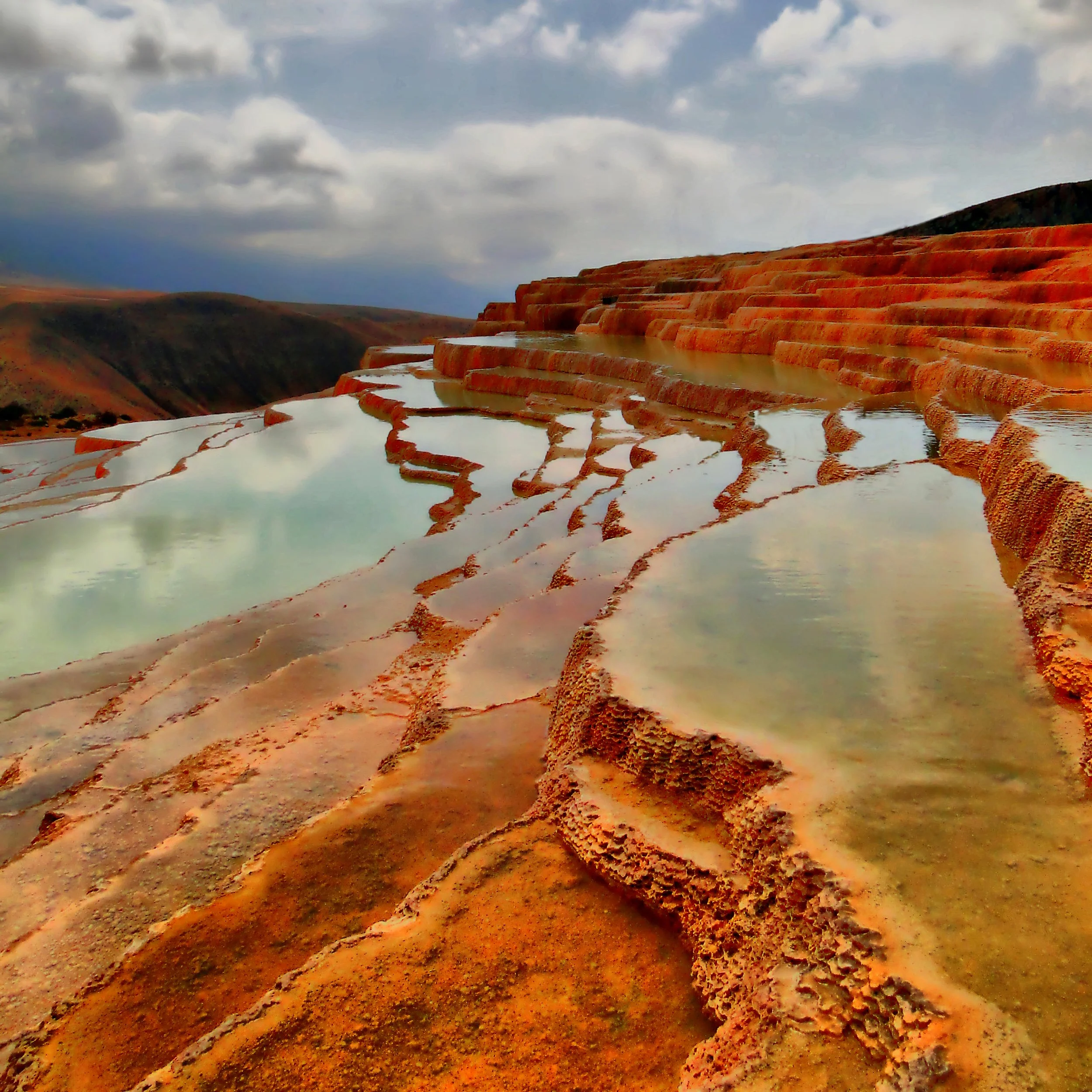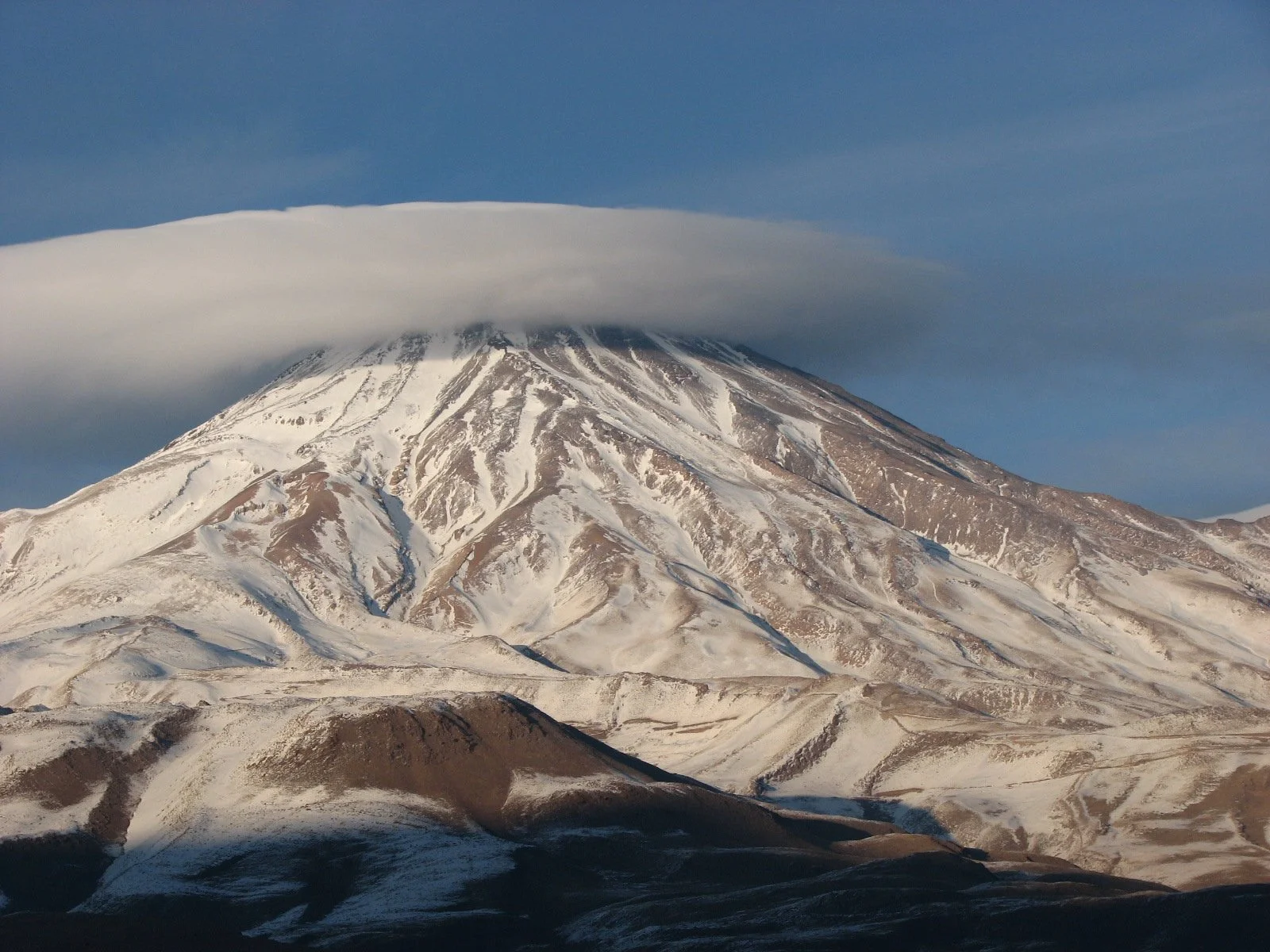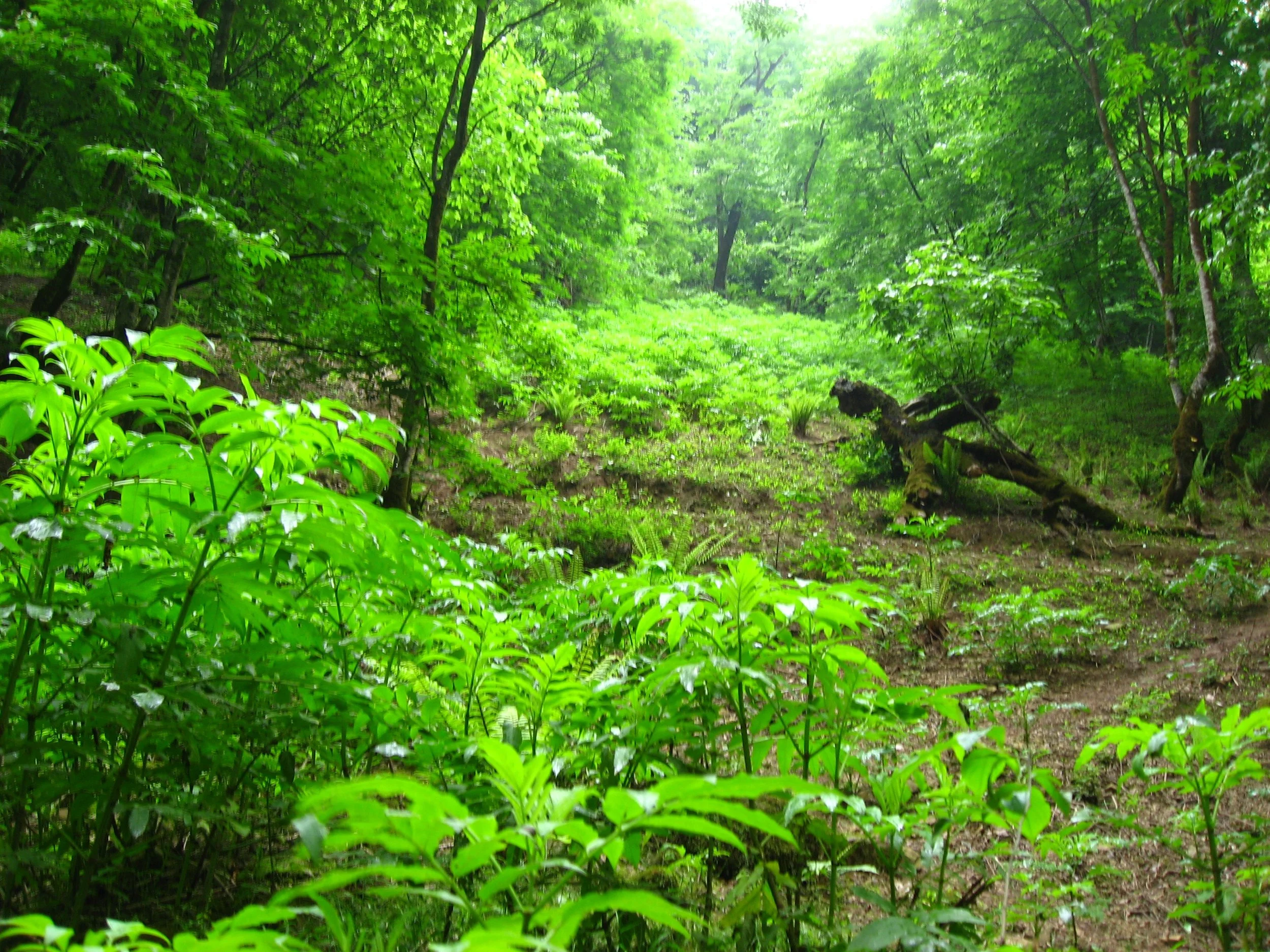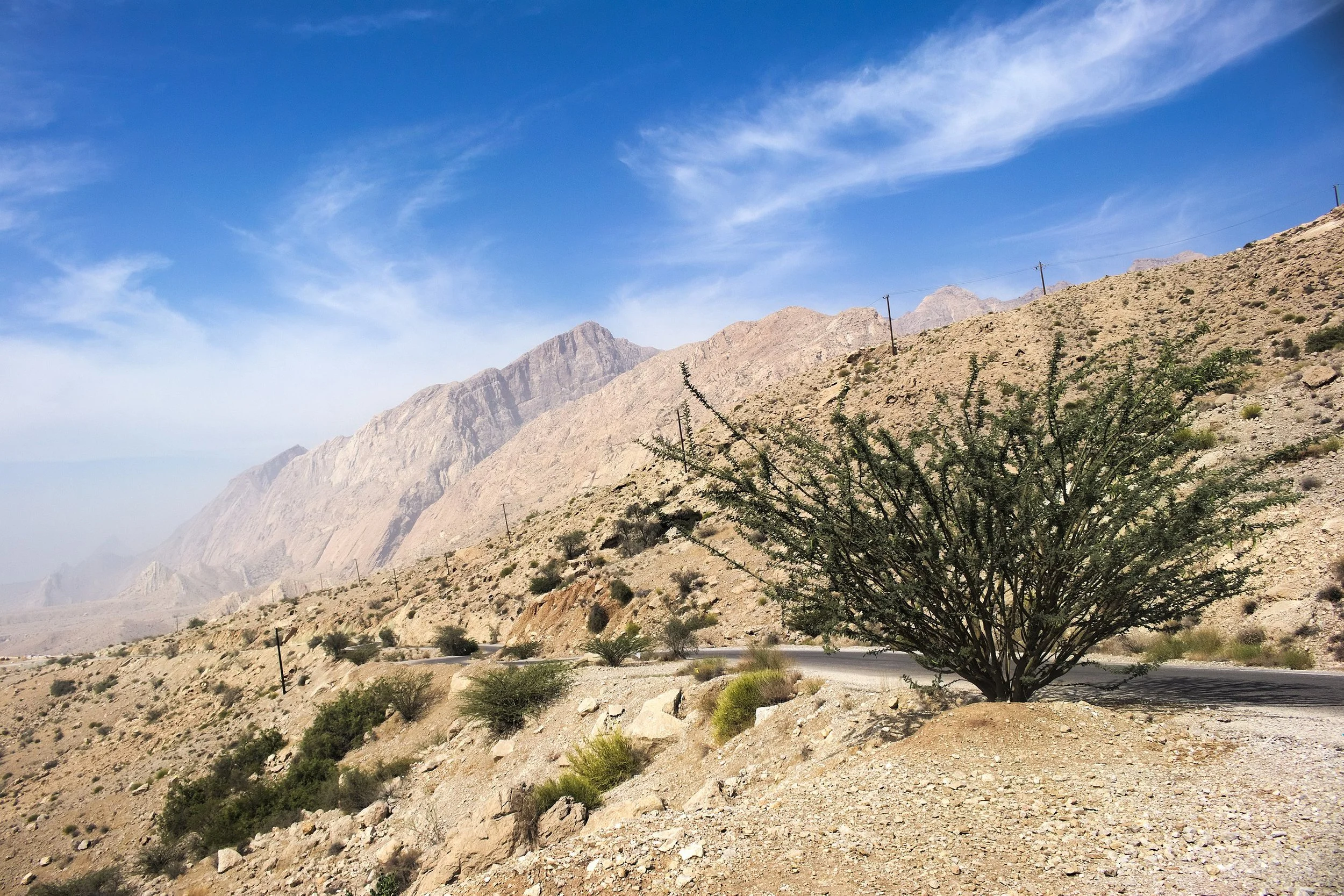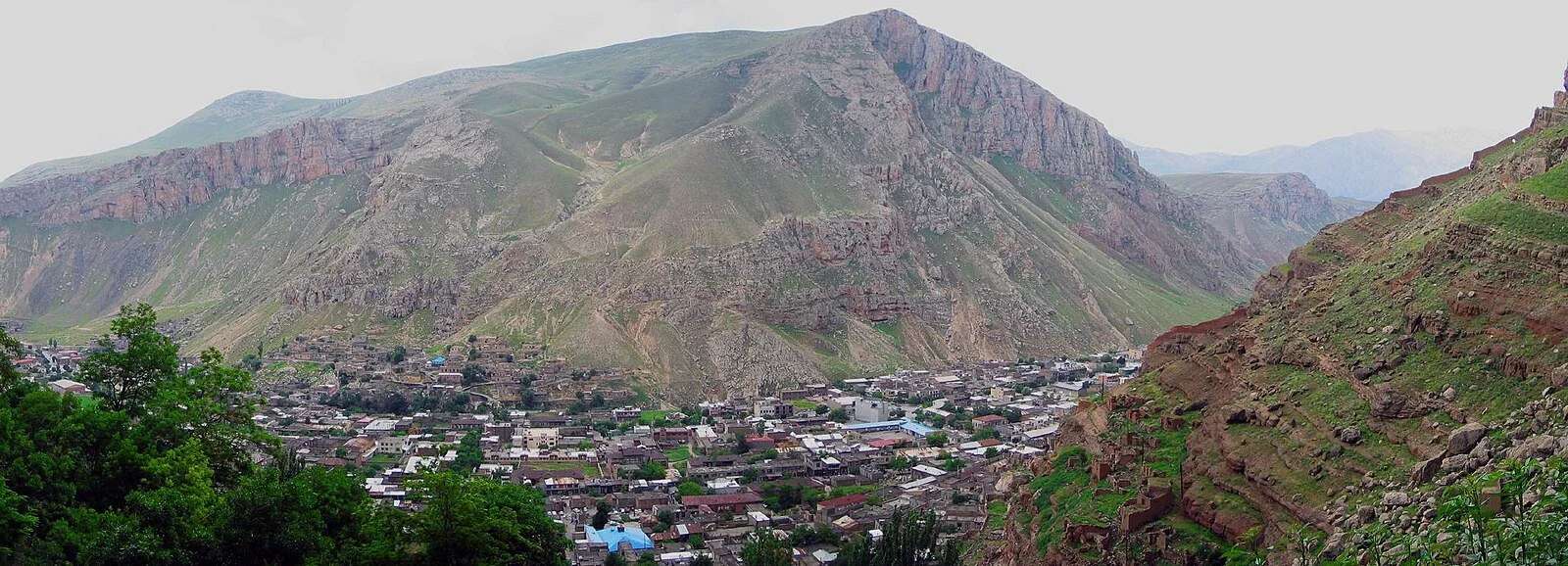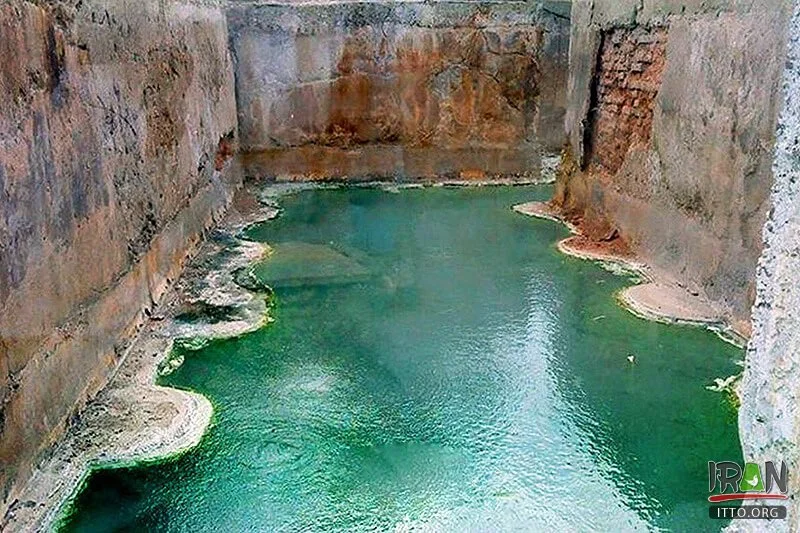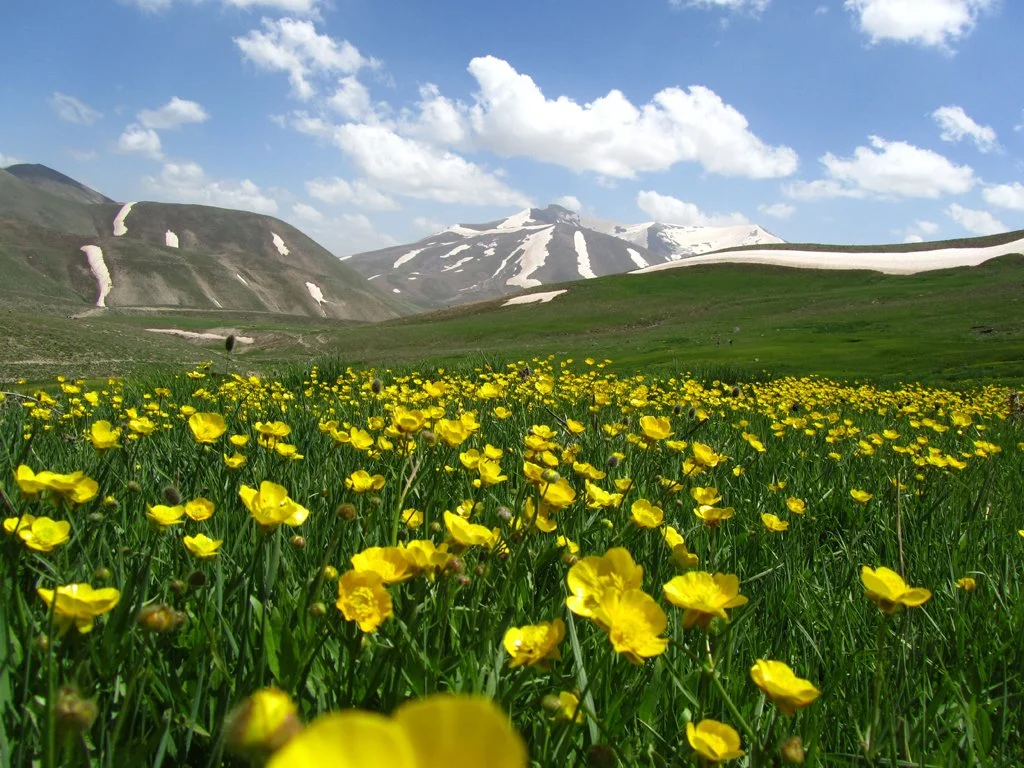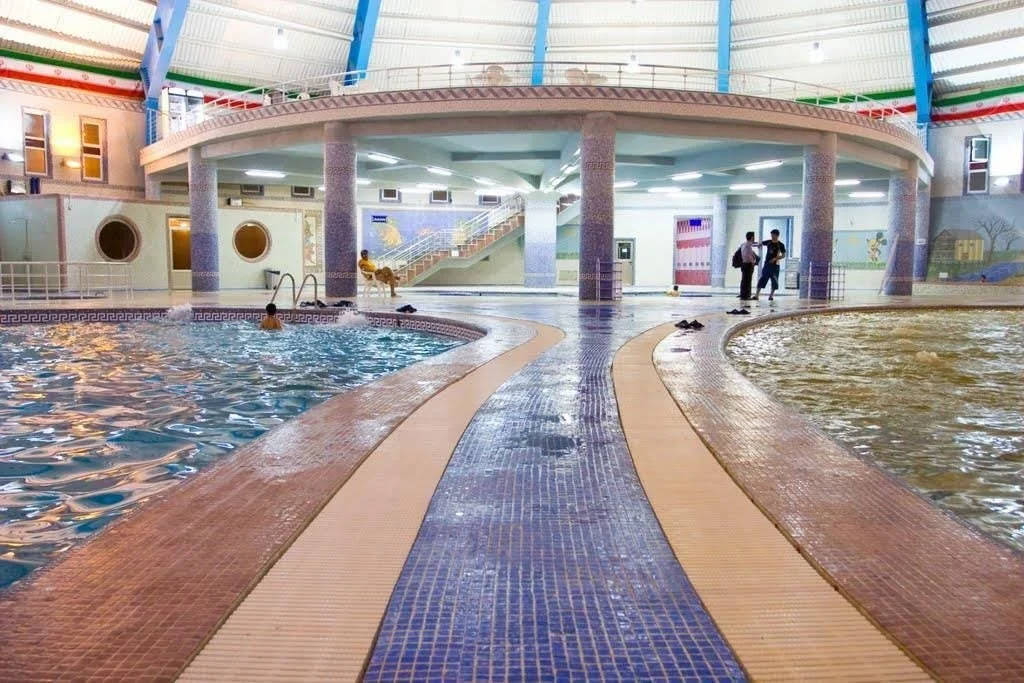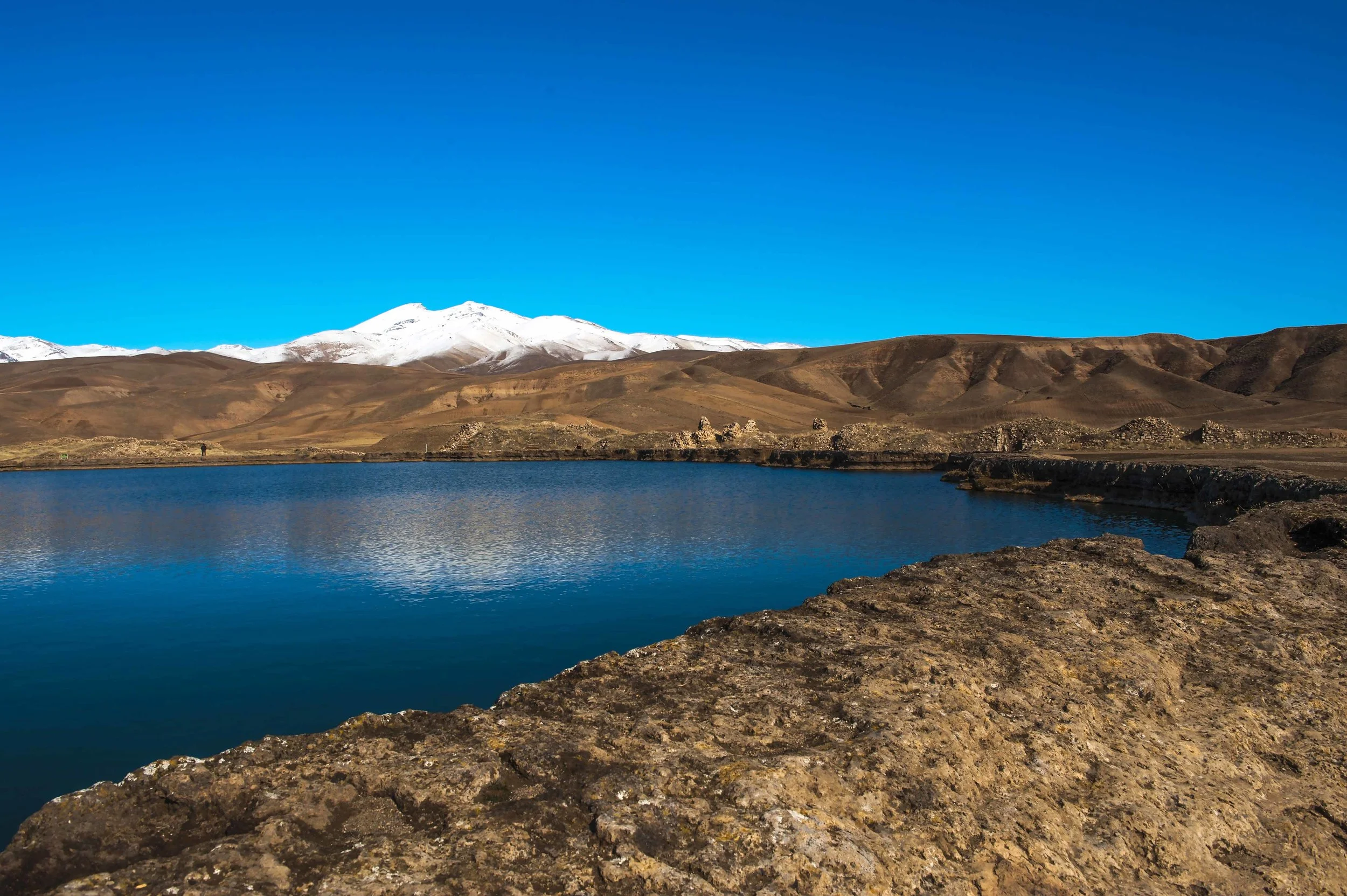More Than 20 Of Iran’s Hot Springs to Visit
If you have been to Iran you can’t miss the culture - beautifully colored mosques, baaars, and holy shrines. But when you are done, don’t forget to relax in their hot springs.
Iran enjoys a diversity of hot springs scattered all around the country, each region offers its own features - apparently as many as 460.
Local people have believed in the medical features of these waters for years and have treated many illnesses in these hot springs which are scientifically proved today and have brought about many people traveling for the health benefits of these springs.
Ahram
Ahram is a city in Bushehr province and the center of Tangistan city, one of its most important tourist attractions is Ahram hot spring. The hot spring of Ahram, Bushehr is one of the tourist attractions around the city of Ahram, and every year, many travelers come to this spring for the purpose of treatment and recreation.
This spring is comes to the surface from the heart of the mountains of the Zagros mountain range. There are two separate pools for gents and ladies. The water of this spring, with a temperature of 35 to 40 degrees Celsius and rich in mineral salts such as sulfur, calcium, magnesium and sodium.
Cheshme Ala Damavand
Another hot spring in Iran is Cheshme Ala, about seventy kilometers northeast of Tehran , and its water boils from the rain and snow that seeps into the soil. In 1352, the French company Prieh approved the water of Cheshme Ala and for the first time in Iran, it started to build a water packaging factory.
The mineral water of Cheshme Ala Damavand has a significant effect in reducing blood pressure in people with high blood pressure and can reduce the risk of cardiovascular diseases .
Badab-e Surt
Located in the south of Sari, Badab-e Surt is a unique set of terraced hot springs created by mineral-rich water flowing over a mountainside.
Badab is the Persian combination of two words; Bad means ‘gas’ and ab means ‘water’. So, Badab means ‘gassed water’ which implies that the spring water is actually carbonated mineral water.
Badab-e Surt is a rare geological masterpiece, formed during the Pleistocene and Pliocene epochs. Only a handful of such places exist in the world.
One of the hot springs spews salty water that’s said to have healing properties. Supposedly, it can cure ailments such as rheumatism and certain skin conditions. The other spring spurts a sour sediment full of oxide which gives the water its beautiful orange tint.
When the light hits the terraces just right, it makes the puddles glow with the red, orange, and yellow tones found in the underlying rock.
Dehloran
The springs of Dehloran city with their therapeutic properties are considered as the center of medical tourism in the west of the country. These springs have a temperature of about 50 degrees Celsius include hot water health springs and therapeutic mud pools, which are located three kilometers northeast of Dehlran in Ilam province.
The water is sulfur-rich and has therapeutic value, particularly for skin and rheumatoid diseases.
During the day, the water of these springs turns into seven colors due to the reflection of the sunlight, which gives them a double charm.
However, due to the presence of a lot of sulfur in the region, people with heart and respiratory problems should not use these springs. The best time to visit Dehlran hot springs is late autumn and early winter.
They are in the foothills of Siah Kuh, close to Khofash (Bats) Cave.
Damavand
Alborz Mount Range is located in the north of Tehran. The highest peak of Iran lies in Alborz Mount, called Damavand. When people in Tehran want to be away from the crowded city’s atmosphere, they usually travel to see the spectacular scenery in Damavand on their holiday.
Some of the spas and cold/hot springs in Damavand, where you can enjoy nature, are Ab Ali, Siah Sang, Ala, and Tiz Ab.
The most important of these hot springs are located in Abe Garm Larijan, in a village by the same name in the district of Larijan in Lar Valley. The water from this spring is useful in the treatment of chronic wounds, and skin diseases. Near these springs there are some public baths with small pools for public use.
If you have enough time after your climb to Mount Damawand, it is a good idea to go to Abe Garm Larijan 5 km from Reyneh, which you may use the benefit of mineral hot water springs of Damavand and spend a night there. The name literally means hot water - abe= Water and garm= Warm, Hot.
Taking a bath in the basin of hot mineral water of Larijan lets you forget about all the exhaustion of the climb very fast, and of course, dont forget the persian chelo kabab afterward!
Falakdeh
Falakdeh hot water springs is located in the heart of the 2,000 Tenkabon forests, and it has made Falekdeh area famous among tourists.
If you are traveling from Chalus road to Falakdeh, go to Tonekabon and enter Do-Hezar, Se-Hezar road. After Lireh-Sar village, there is 7 kilometer earthen road lead you to the small village of Falakdeh. From the village you must walk about 500 meters to visit the spa.
One of the advantages of Flakdeh hot springs is that there is no sulfur in its water - so no stinky smell after! Falakdeh region has a cool climate and foothills, which is very pleasant in the hot seasons of the year.
The Falakdeh hot spring is one of the most beautiful hot springs in Mazandaran. The area’s natural beauty enhances the charm of the hot spring. Situated near the Liresar River and surrounded by cold springs and dense forests, the location exudes a mysterious atmosphere.
Ferdows
Ferdows hot springs in South Khorasan ranks first among Iran's hot springs in terms of the variety of mineral salts, and it is a health tourism brand in the east of the country and one of the few healing springs in Iran and the world.
The water temperature of this hot spring is between 40 and 50 degrees Celsius and there are compounds such as sodium, chloride, sulfate, bicarbonate , calcium, magnesium, etc. in its solution. Treating skin diseases, improving joint and nerve pain, increasing blood flow and heart activity are among the therapeutic properties of this hot water.
The hot spring complex has facilities such as hydrotherapy pools for women and men, luxury private bathtubs with dry sauna and hot mineral water pool, three-star villa suites with amenities, cheap rooms, restaurant. It is the longest zip line in the east of the country. The best time to visit Ferdows is from the end of winter to the middle of spring and also, autumn.
Garou
At a distance of about 5 km from the village of Baliran and in the middle of the forest, there is a hot spring which is another attraction of this forest.
The hot water of Baliran forest, which is known as Garou hot water, is one of the sulfur hot springs, so that the smell of sulfur can be felt from hundreds of meters before the spring. This hot spring does not have a high temperature and is only a few degrees warmer than the river downstream, but just a few degrees is enough to enjoy it.
Genu
Genu Hot Spring is located 34 km northeast of Bandar Abbas city and 22 km from Bandar Abbas - Sirjan road, which is considered one of the famous places in Hormozgan province.
The water of Genu hot spring is very hot sulfur water, which is used to irrigate groves and bathe.
The only habitat of Avinius gynois or Aphanius gynois fish in the world is in the hot water of Genu Bandar Abbas, which lives at a temperature of about 40 degrees Celsius of the spring and is considered one of the important features of this spring, so be considerate of these fish.
It includes a recreational and hydrotherapy complex with facilities such as parking, hotel, amusement park, pavilions and platforms for setting up tents is a great place for tourists to stay.
Hammam-e Vakil
If you dream of experiencing plasterwork and candy twist columns, Hammam Vakil that dates back to Zandie era as one of the most remarkable historical miracles, could be a good example. Taking bath in the handsome heat room with vaulted ceiling, small pool and pillars was commonplace in ancient era in Shiraz.
Khoy-Maku
Khoy county is located in Iran’s West Azerbaijan Province near the border of Turkey. Due to its natural attractions, eye-catching gardens and healing hot spring, the county is considered a tourist destination. Khoy is in a large plain near Maku.
Maku is a city with wonderful nature which lies in a valley, on the main road of Tabriz-Bazargan. The trades of Iran and Turkey are held in a boundary market named Sarisu of Maku.
Zangmar River flows through Maku and divides the city to Northen and Southern parts, called “Markazi” and “Bazargan”. Maku consists of two towns and five villages.
The mountainous and lush terrains which consist of hot mineral springs, waterfalls, and wildlife make the area an amazing natural destination. Also the ancient palaces, mansions, and churches are the historical aspects of Maku.
Larijan
Larijan Hot Springs of Amol (also known as Rineh hot spring) is another stop to explore Iran’s hot springs. There are some hotels in the area, but lots of touristic developments are still needed to make more facilities available. It has several individual bathtubs and some public pools for visitors and bathroom. For tourists, there is hotel and motel and other residence.
As hot springs are formed by volcanic activities, they’re located in the mountainous area of Larijan in Amol.
The temperature of Larijan Hot Springs is about 62C and the water is full of sulfur. Due to this reason, it’s efficient for derma disease, joints pain, and rheumatism.
One of the most famous Spa of Larijan is “Shah Abbasi Bath.” After Shah Abbasi bath, Ab-Ahan (Water-iron) pool is the most famous pool of the district. There is a high amount of iron in the water of this spring which is obvious from its color and so be careful of staining you clothes!
Mahalat
The Mahalat Hot Springs is a collection of six hot springs situated in the northeastern highlands of Mahalat. The depths of these Iran’s Natural springs vary in different parts, reaching up to 20,000 meters in some spots. The six main springs—Shafa, Abejoush, Donbeh, Soleimanie, Hakim, and Soda—are rich in calcic sulfate compounds
The temperature of the Mahalat hot springs changes according to the depth and speed of the water, ranging from 50 to 100 degrees Celsius at times - so definitely be careful. These hot springs are groundwater sources that, due to the pressure of the underlying layers of the earth, rise to the surface at different speeds.
Mahalat hot springs complex has proper facilities including pool, private bathrooms with tub, restaurant, café, and tourist resorts. Also many cheap guest houses are available in the village nearby. The seasons to use Mahallat hot springs are summers and springs especially August and September.
The mineral water of Mahalat contains sulfate calcic, good for gout, kidney, liver, and bilious disorders. For years, Iranians especially people from Qom, Kashan, Isfahan, and Markazi Province go to Mahallat hot springs to have fun and health benefits both.
The spring’s source, placed in the highest place of the town, besides the towering plane trees and carved stairs in the rocks make an eye-catching landscape. The water flows to fountains and recreational parks too.
Mahalat is also famous due to its gardens full of various flowers, so it’s considered as the main center of flower growth in Iran.
Morteza Ali
Morteza Ali Hot Spring is 27 km from Tabas Town in South Khorasan Province. The spring contains cold and hot water flowing in the middle of the desert.
There’s a valley where there are rocky walls full of cells. The hot water falls down from these cells. As it has different minerals to the cold flowing water, they don’t mix and can be recognized until passing 300 meters of the river bed. Therefore, you can put your foot one side in cold water and other foot in hot water. This phenomenon is rare in the world.
The high levels of minerals such as sulfur, calcium, and magnesium in the hot spring water are known to have therapeutic properties, improving skin health, aiding in muscle relaxation, and even reducing inflammation.
Morteza Ali Spring also holds a significant historical connection to the Abbasi Dam, the thinnest and oldest arch dam in the world.
Qajar Traditional Bath
Qazvin is a city with a lot of bathhouses. Qajar Bath is one of the oldest and biggest public bathes in Qazvin, which was built on the order of the Safavid ruler Shah Abbas (1571-1629) by one of his commanders. The bathhouse includes a changing room (sarbineh) and a hot chamber (garm khaneh), and had a section for use by women and one for men.
Ramsar
Ramsar, a coastal city, is another spot for Iran’s hot springs. The hot spring water in Ramsar contains gas sulfur and chlorine bicarbonate calcic and it’s originated from Alborz Mountains.
The Ramsar hot springs in Iran are known for their mineral-rich, sulfurous, and carbonated waters. The hot springs are also famous for having among the world's highest natural radiation levels due to the local geology, which includes high levels of radioactive radium in rocks and groundwater that are brought to the surface by the water.
The temperature of the largest hot spring in Ramsar is about 42C. Some of the most important Iran hot springs in Ramsar with numerous therapeutic features are:
Mahmoud Garma & Aziz Garma (Ramsar)
Ashkar Garma (Sadat Shahr)
Kash Hot Spring (Sadat Shahr)
Sang Boneh (Sadat Shahr)
Shah Madar Garmabeh (Behind the new Ramsar Hotel)
Sana Hot Spring (Behind Ramsar Hotel)
Shah Madar Garmabeh (Behind Ramsar Hotel, effective for backache and joints pain)
Sahand
The silent volcanic mount range of Sahand lies in the south-east of Tabriz. It has 17 peaks with altitudes above 3,000 meters. Sahand is also the name for the highest peak which is 3700 meters high.
Sahand Mount Ranges has many rivers, cold/hot springs, and spas with acid and iron water. The west foothills consist of saline and mineral water sources too.
Just like Sabalan Mount, Sahand has an awe-standing nature. That’s why they call it the bride mount of Iran. The best time to climb Sahand Mountain and visit its hot springs is the end of June till the end of August.
To reach Sahand Peak, driving is available until Lighvan. After then a 5 hour walk in the flourishing foothills, the climbers get an area called “Ab-Garm” which means hot water in Persian (That’s why some towns and villages in other areas called Ab-e Garm as well).
From Ab-e Garm, you need to climb for 11 hours to reach Sahand Peak. On the way, you will watch some beautiful hot springs of Iran.
Sarein
Sarein, a famous touristic city especially for its springs, lies in Sabalan region 25 km from Ardabil in the northwest of Iran. The hot springs in Sarein city is 25 km from Ardabil city and are popular among tourists because of their special therapeutic properties.
Gaumish Goli, Kahve Sui, Sari Su, Qara Su, Pahnli Su and Sablan water treatment complexes, Shafa Natural Bath and Besh Bajilar are among the hot springs of Sarein.
Iran Sarein Springs consist of nine hot water springs. The water gets hot by Sabalan Mountain, the second-highest mountain of Iran (Damavand is the first highest). Two of these hot springs have recreational facilities, while they can relieve pain due to their minerals. The hottest spring is “Gavmesh Goli” with a maximum temperature of 67 degrees. It gives out around 80 liters/s from the source.
Gaumish Goli hot water is the most abundant mineral spring in Sarein city in terms of water flow and size, which has an open pool with a depth of 130 cm. Its sour taste, colorless and slightly fragrant water flows constantly and boiling.
Sablan Sarein Hydrotherapy Complex is considered the largest hydrotherapy center in the Middle East with facilities such as indoor swimming pools and pressurized hot water pools (Jacuzzi), dry and steam saunas, individual bathtubs, medical services and treatment, private parking, etc. are open to tourists .
Once you are overheated, five kilometers from Sareen in " Villa Dere ", there are two cold water pools with carbonated water, where tourists can not only drink but also take a dip in the water. There are also two cold water springs in Vila Valley, 5 km from Sarein. The fizzy water, which is very good for kidneys, makes a wonderful landscape with of towering trees over the mountains. Also a village nearby, called Sardava, has a carbonated cold water spring with therapeutic benefits. It completes Sarein attractions.
Shahan Garmab Freeman
Shahan Garmab Khorasan hot spring is located about 130 km southeast of Mashhad, 58 km east of Freeman and 31 km from Sefid Seng. This spring is the only drinkable mineral spa in Iran that is recommended to drink, and in terms of therapeutic properties, it is considered the second hot mineral spring in the world.
The water temperature of Shahan Garmab Freeman Spa is constant and around 48 degrees Celsius, which is effective in treating diseases such as skin disorders, bone and joint pains, rheumatism, digestive problems, eczema, arthritis, headaches, depression , etc.
The anti-uric acid property of this water is also considered as a kind of solvent for kidney and bladder stones, and as a result, drinking about one liter of it three times a day can be effective. In addition, this water has natural gas and is considered one of the most natural carbonated drinks .
In addition to women's and men's sanitary spa pools, which are equipped with wardrobes, showers, tubs and toilets, suites with private spa tubs, as well as spa tubs for hourly use.
Tekab-Hashtrood
A town in West Azerbaijan Province, Tekab has many hot springs in Takht-e Soleiman and Gaynarja Village. Takht-e Soleiman is a historical area with lots of significant monuments such as ancient Sassanid palaces and fire temples.
Two km from North West of Ahmad Abad Olya Village in Takht-e Soleiman, there are therapeutic hot springs with curative cold water springs nearby. They’re modernized in Takht-e Soleiman complex for public.
The hydrotherapy complex of Takht-e Soleyman is one of the most important attractions of West Azerbaijan Province. This creational complex is equipped with appropriate facilities such as two swimming pools, basins, sauna, Jacuzzi, and heating systems. There are also other sections like resorts, several suits, kids’ park, cycling race, and theatre salon.
The UNESCO site of Takht-e Soleyman, in north-western Iran, is situated in a valley set in a volcanic mountain region. The site has strong symbolic and spiritual significance related to fire and water – the principal reason for its occupation from ancient times – and stands as an exceptional testimony of the continuation of a cult related to fire and water over a period of some 2,500 years.
Takht Suleiman was the largest educational, religious and prayer center before Islam, and it is known as the most important base of Zoroastrianism. Takht-e Soleyman (Throne of Solomon) is a sacred archaeological site in Iran considered to be one of the Earth's energy centers or "earth chakras" by some spiritual tourists.
Gaynarja Village is located 40 km from Tekab Town and 15 km from the world heritage of Takht-e Soleiman. The village has got popular due to its rich nature including waterfalls and hot springs. The hot springs in this village have distinct curative effects, especially beneficial for joints pain. There are facilities like basins and lodges near the springs and many tourists travel there yearly.
Charoymaq Village, which has lots of natural and historical attractions, used to be one of the villages of Hashtroud. Numerous hot springs and a nice climate has made Charoymaq a touristic center. The natural allures include hot springs, spas, and caves. The hydrotherapy hot water complex, Maneshgah hydrotherapy complex, and Pir Saqqa Spring are the remarkable places in West Azerbaijan Province. Hammam Hot springs in Hammam Village is another option which one of them is indoor with a sulfate-water basin. Another hot spring has an outdoor basin. This area also has historical attractions such as ancient palaces and hills.
Vananaq
Vananaq Hot Spring is located near Vananaq Village in Qareh Poshtelu, Zanjan Province. Vananaq Hot Spring has sulfuric water with therapeutic benefits.
The first highlight is a deep basin where water is extracted through a stream with a speed of 7 Litres/Minute. The second basin has a depth of 120 cm and flows down to the pools with the speed of 10 Litre/minute, so people can use it for farms.

